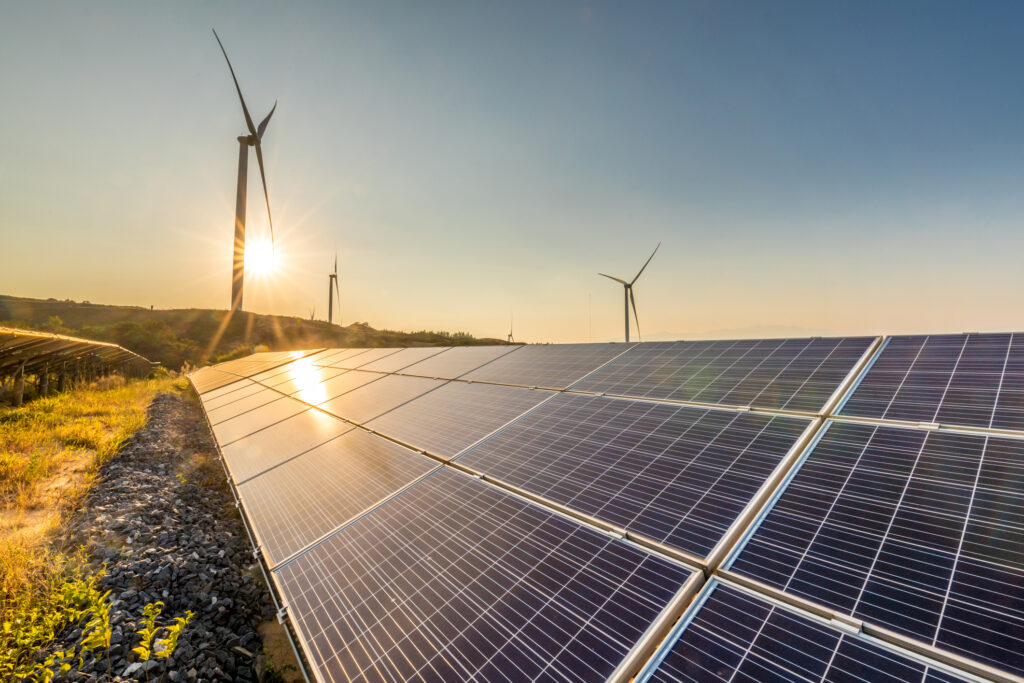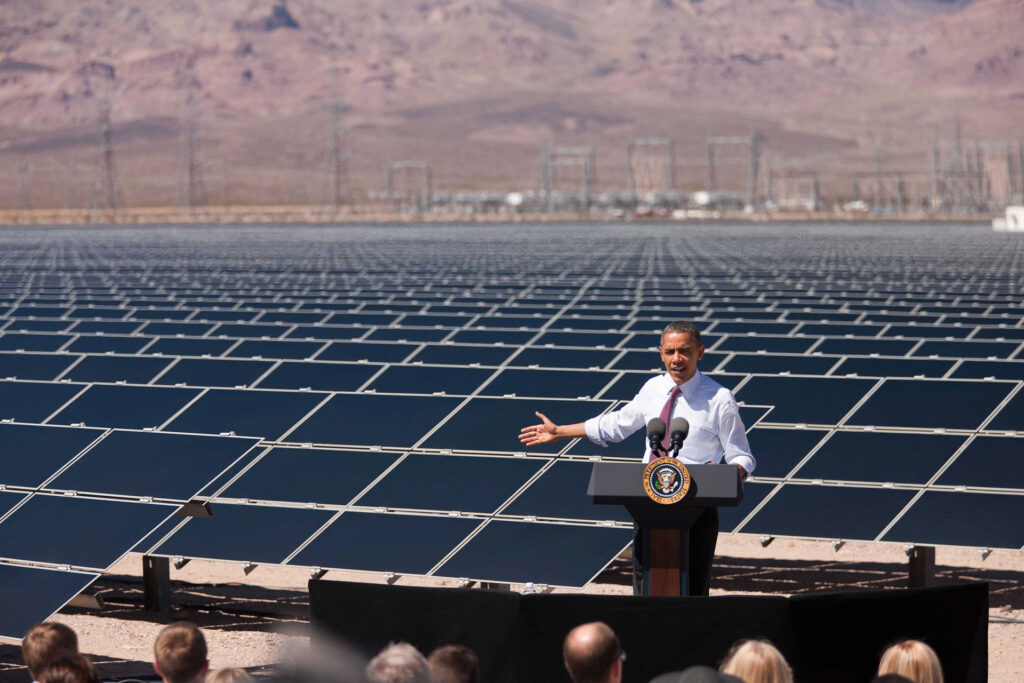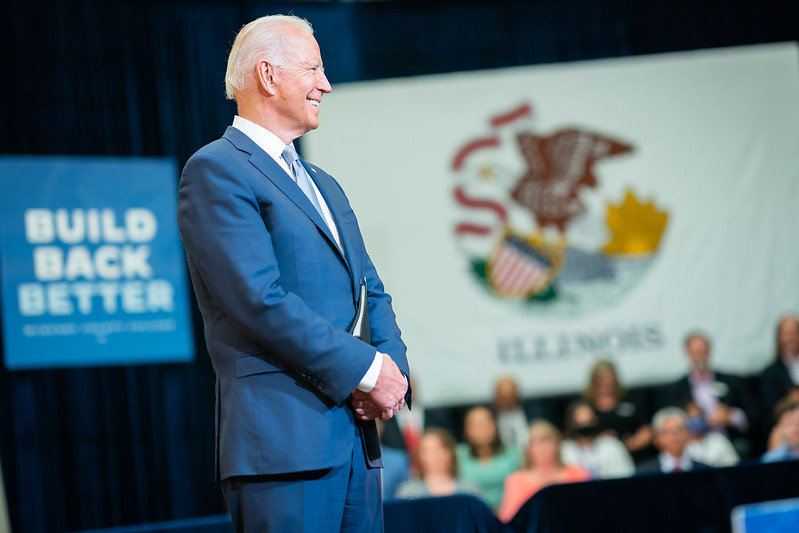
The U.S. is aiming to pivot to clean technologies like electric vehicles. But the U.S. must get the policy right, or else we’ll cede yet another industry to China.
Here’s a depressing statistic: Twenty years ago, the United States made 22% of the world’s solar panels. Now, American factories make just 1%.
The failure for a robust solar industry to take root in the United States – despite plenty of interest and billions of dollars in investments – offers an important lesson as policymakers aim to build and grow new clean industries. The transition to electric vehicles does offer an opportunity to create millions of new jobs, for example, but there also is major room for error if we get the policy wrong.
We’ve already traded foreign oil for Made in China solar panels. Now it’s time to get things back on track – and not make the same mistakes with EVs, too.
Solar Lessons
In the first decade of the 21st century, solar panel manufacturing was seen as critical to the future of U.S. industry, and there was optimism about its potential for job growth. Presidents George W. Bush and Barack Obama both announced a slew of initiatives to pivot the country to clean energy, and solar panels were a big part of those efforts.
Industry responded. According to Bloomberg, at one point there were “75 major solar parts factories in the U.S., a number that was expected to grow as the industry flourished.” There were American companies that wanted to do the work here, and American workers who stepped up to the plate, too.

The industry, however, did not flourish. American solar manufacturers struggled to stay in business as a slew of imports from China flooded the market. Most U.S. solar companies went out of business, including SolarWorld, a once vibrant factory in Hillsboro, Ore., that at its peak employed more than 1,000 people.
The reason for this is fairly straightforward: China’s government set out to dominate the global solar industry. It succeeded.
While the U.S. did invest in solar, China’s investments dwarfed those by the U.S. – and China’s plan was far more coordinated, too.
But coordination doesn’t equal fairness. China employed a mix of massive government subsidies, lax environmental standards, and even forced labor practices to make its solar panels. It also built up its domestic solar supply chain and kept coal plants open to supply cheap electricity to make the new equipment (which sort of defeats the purpose, don’t you think?).
China then pushed its artificially cheap solar panels onto the global marketplace. That ended up suppressing the U.S. industry, which abides by much stricter labor and environmental standards and free market rules.
The United States responded in 2012 by issuing tariffs on U.S. solar cell imports from China. But China dodged the tariffs by shifting production to places like Taiwan. All the while, American solar factories closed.
The trade fights continue today. The Trump administration issued a tariff on solar imports from Chinese-owned companies in 2018. American solar manufacturers Auxin Solar Inc., and Suniva Inc. recently asked the International Trade Commission to extend those tariffs for four more years, and a group of U.S. solar manufacturers also filed recent petitions requesting investigations into Chinese companies that they say are circumventing tariffs already on the books by making products in places like Malaysia, Vietnam, and Thailand.
Tariffs haven’t revitalized the fledgling domestic solar industry, but they have helped get things moving in a positive direction, and that’s worth something. According to the Wall Street Journal:
“Since the tariffs were imposed, solar-panel production in the U.S. has tripled. A Chinese company and a Korean company set up factories in the U.S., and an American firm, First Solar Inc., expanded domestic production. … Auxin says that the tariffs have helped it stay in business and expand production capacity somewhat. But it says it needs a new round of tariffs to expand further, including to start producing the silicon wafers used to make solar cells, which turn sunlight into electricity.”
History Can’t Repeat Itself
Indeed, there’s a pressing need to rebuild domestic solar manufacturing and a U.S.-based supply chain. The threat of climate change is more dire than ever, which means that there is a massive need to reduce carbon emissions. Solar will be a key part of that effort — and China’s solar industry is dirty. If the United States really wants to safeguard the environment, it must build up a cleaner alternative.
But there’s also growing (and frankly, long overdue) concern over China’s use of forced labor in its solar industry. The United States already has banned imports of polysilicon made in the Xinjiang region, where China stands accused of employing forced Uyghur labor to manufacture those products. But as researchers like Horizon Advisory have noted, the China’s solar industry is so tainted that “as long as we in the U.S. continue to build our solar industry on Chinese sources, we are building on a foundation of forced labor.”
So it’s time to get to work, not only in solar, but also in other industries that will power the clean energy future. Unfortunately, the United States is already behind. Once again, China is undertaking a massive, coordinated effort to dominate the industries of the future.
Electric vehicles (EVs) are one example.
The Biden administration has identified EVs as a priority for its Build Back Better plans. Already, President Biden has set a target of having 50% of all new passenger vehicle sales be zero-emission by 2030. The bipartisan infrastructure investment bill passed by the Senate includes $7.5 billion to install EV charging stations, which will help make it feasible for drivers to actually drive EVs. Meanwhile, American automakers like Ford and General Motors are ramping up plans to make more EVs.

It all sounds great, but it is nowhere near enough compared to what China is doing.
As Horizon Advisory outlined in June, China is laps ahead in the EV race, and the United States is barely in it. The Chinese government heavily subsidizes EV production and purchases, and is also positioned to establish control over critical EV inputs like cobalt and batteries. It is using subsidies to build low-cost production, inflating domestic demand through consumer incentives, using joint ventures to capture foreign technology, and targeting distressed assets and suppliers abroad to acquire even more resources and technology.
The “U.S. must compete, immediately,” the researchers noted. “It must do so in a fashion that accounts for the positions of global dependence China has already secured, as well as the non-market subsidization, regularly arbitrage, and mercantilism that feed China’s model.”
The U.S. solar industry losses of the past two decades show us that the United States will not be able to throw a little bit of money at the EV transition and hope it works out for the best. Not when we know China is working so hard to dominate the global market – and is willing to break the rules to do so.
U.S. policymakers need to implement a specific, coordinated strategy to strengthen and grow U.S. domestic EV production, along with the related supply chain and infrastructure to support it.
There does seem to be recognition by the administration and on Capitol Hill that more needs to be done. The Senate’s passage of the so-called China competitiveness bill in June is one example, as it will steer nearly a quarter trillion dollars into research and development. Biden, meanwhile, has taken action to strengthen domestic supply chains, something that became more pressing during the COVID-19 pandemic.
Investments like the ones in the infrastructure bill, which already passed the Senate and could get House approval by Sept. 27, also will be vital. And these investments must be coupled with strong Buy America preferences that ensure when the government spends taxpayer funds on these projects, they are reinvested into American workers and manufacturers, which will help strengthen domestic industry overall.
Meanwhile, incentives to encourage consumer purchases of EVs should include domestic content requirements. Once again, we should ensure tax dollars are directed to support our own industry, not EVs that are made overseas.
Above all, now is not a time for moderation. China already is doing everything it can to dominate the industries of the future. There’s still time for the United States to enter the race – but we need to remember some of the lessons of the past two decades to make it to the winner’s circle.
